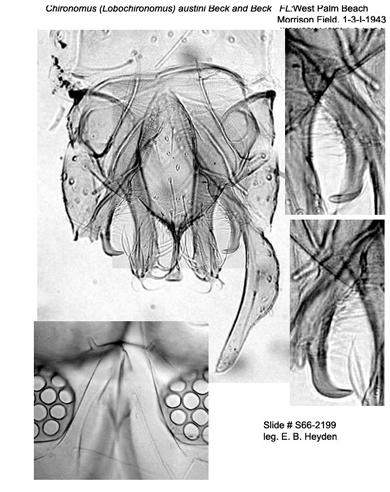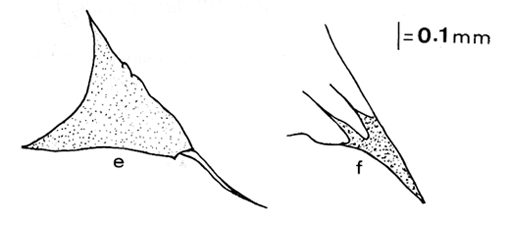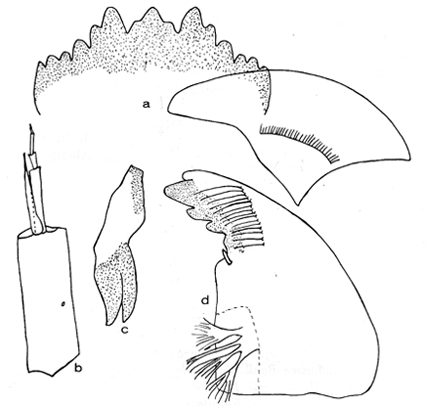Species 4h. Chironomus (Lobochironomus) austini (Beck & Beck), 1970Descriptions based on Beck and Beck (1970) Adult  Male terminalia and frontal tubercles of C. (Lobochironomus) austini (Photos courtesy of J.E. Sublette). Thorax light brown, mesonotal vittae, scutellum and sternum medium brown to ochraceous, postnotum almost black. Thoracic setae: dorsocentral - about 10; prealar - 3. AR - 2.76, wing length 1.95 mm. Legs - darker at apices of tibae and of tarsal segments brown. Fore tarsus apparently without beard, fore LR 1.9-2.0. Setae on TIX in several pale areas (appear diamond shaped in above photograph). Hypopygium as in figure. Superior volsella closest to an E-type, but not really as any of Strenzke's illustrations. Anal point narrow but broadens at distal end. Inferior volsella reaching to end of anal point and midpoint of gonostylus, with setae only at tip. Gonostylus moderately swollen and narrows markedly from just after midpoint. Pupa: About 5.7 mm long, brown in color. Cephalic tubercles (e, below) fairly large, with preapical bristle.  Cephalic tubercle (e), and spur of segment VIII (f), of C. (Lobochironomus) austini. (From Beck & Beck, 1970) Fourth instar larva with pale head capsule. 2nd laterals of mentum almost fused to 1st laterals (more so than in C. longipes (=(Lobochironomus) dorsalis), 4th lateral teeth reduced about to level of 5th lateral (type II).  Larval mouthparts of C. (Lobochironomus) austini a. Mentum and ventromentum, b. Antenna, c. Premandible, d. Mandible. (From Beck & Beck, 1970) Cytology: Not known. Found: Florida – Duval Co. (Type); Morrison Field, West Palm Beach, Palm Beach Co. Streams associated with swamps, possibly acidic. All life stages briefly described by Beck & Beck (1970)and some larval characters in Epler (2001). |
Modified: 16 August 2024
Access: Unrestricted
Copyright © 2000-2024, Jon Martin.